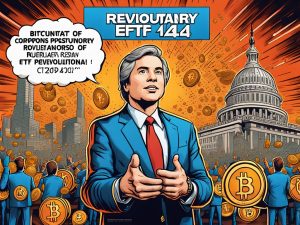What is The Federal Open Market Committee (FOMC)?
The Federal Open Market Committee (FOMC) is a part of the Federal Reserve System of the United States. Its main purpose is to make decisions regarding monetary policy. The committee consists of 12 members, including the president of the Federal Reserve Bank of New York, seven members from the Board of Governors, and four other rotating Reserve Bank presidents.
FOMC Dates of Meeting
The FOMC holds eight regular meetings each year. The meeting dates are publicly displayed on the Federal Reserve’s website. The next meeting is scheduled for January 30-31, 2024. After each meeting, Federal Chair Jerome H. Powell releases a statement and a summary of economic projections, followed by a press conference.
|
January |
30-31 |
|
March |
19-20* |
|
Apr/May |
30-1 |
|
June |
11-12* |
|
July |
30-31 |
|
September |
17-18* |
|
November |
6-7 |
|
December |
17-18* |
*Meetings remain tentative until officially confirmed during the preceding session.
Why Does This Matter?
The decisions made by the FOMC have a significant impact on the economy and financial markets. That’s why policymakers, analysts, and investors closely monitor these meetings. The committee determines the federal funds rate range, which affects the interest rates at which banks lend to each other for short-term loans. This, in turn, affects consumer and business borrowing costs. Additionally, the FOMC decides on the composition and size of the Fed’s balance sheet, directly impacting the amount of money in circulation within the economy.
During the December 2023 FOMC meeting, the Federal Reserve decided to maintain its policy rate within the range of 5.25% to 5.5%. According to the Fed’s statements, there are indications of three quarter-point cuts expected in 2024.
What Guides the FOMC?
The FOMC relies on economic indicators to make its decisions. Factors such as GDP growth, unemployment rates, inflation figures, consumer spending, business investments, trade balances, and financial market conditions all play a role. The committee also takes into account global economic factors and feedback from the public.
FOMC’s Monetary Policy Objectives
The FOMC operates with a clear set of goals, known as the “dual mandate.” This involves promoting maximum employment, maintaining stable prices, and ensuring moderate long-term interest rates. To achieve these objectives, the committee adopts a flexible, forward-looking, and data-dependent approach, prioritizing transparency and accountability in its decision-making process.
Hot Take: The Importance of FOMC Meetings for the Economy
The Federal Open Market Committee (FOMC) plays a crucial role in shaping the monetary policy of the United States. Its decisions have far-reaching effects on the economy and financial markets. By setting interest rates and determining the amount of money in circulation, the FOMC influences borrowing costs for consumers and businesses alike. Investors closely follow FOMC meetings to gain insights into future economic conditions. As we move into 2024, three quarter-point cuts are anticipated, signaling potential changes in monetary policy. Paying attention to FOMC meeting dates and announcements is essential for anyone interested in understanding and navigating the dynamics of the US economy.


 By
By
 By
By
 By
By
 By
By
 By
By